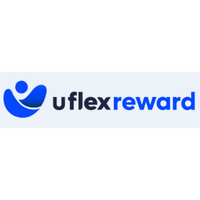Six ways to make sure total reward is communicated effectively

A 2016 study of more than 2,000 employees, What Your Employees Think About Your Benefits Communication, found that almost half of all employees are confused by the benefits their employers’ offer them. So, what is the point of spending all of this money, time and effort if employees do not understand the value to them?
To get maximum results from your total reward strategy, employees need to fully understand what you are offering them, why it exists and what it means for them, personally.
Communication is the key to success. Ensure your messages are always available and easy to access. They need to be clear and simple to understand; and globally aligned to your strategy, whilst also being locally tailored to your markets.
It is important to use analytics to measure the effectiveness of your reward communication. Total reward should not be static as it can lead to employee dissatisfaction and increased turnover if not communicated correctly. It must be aligned to the individual needs of your employees. Measuring, tweaking and improving the strategy of your reward communication, in an agile manner, is important to its continued effectiveness.
Here are my six top tips for effective total reward communication:
1. Information should be digital
Reward communication is a pointless feat if your employees do not know where to find the information they need. Creating a one-stop-shop for employees to go for all things reward should be the first step.
Accessibility to total reward data should also be a key factor in your total reward communication strategy. It should be available online and easily accessible via any device. Proper communication can be done through online total reward statements as the first point of entry. Online statements are where information should be consolidated so that employees are not jumping from multiple sources to view their personal total reward information.
2. Always available and always accurate
Our Reward Survey research (2021) found that 83% of firms cannot supply employees with real-time total reward statements. If the available reward information is out-of-date (based on a previous role, salary or location), then it becomes meaningless to the employee. Ensure that the total reward information you communicate is based on the most recent employee attributes. This will create value for the employee because it is relevant and current.
Always-on and always valid, digital total reward statements are important to your employees. They can go in to view their data when and as often as they need to. This information might be required at different stages or for different life events, such as applying for a mortgage or planning for retirement, so it needs to be live and recent.
3. All forms of reward should be communicated
All forms of reward should be included in your communication strategy, regardless of whether there is a monetary or non-monetary value.
The economic value of rewards that are not in the payslip could be valued much higher by the employee. Leaving these out would do a disservice to both employee and employer. Items such as recognition, professional development courses, flex vacation days, maternity/paternity leave, or the option for a subsidised bicycle could be that extra motivational tool for an employee. WorldatWork and Maritz Motivation's 2019 Trends in Employee Recognition Survey shows it isn’t necessarily performance pay that motivates; non-cash reward is often an underestimated motivational tool.
Go that extra mile to let your employees understand the full value of your investment in them.
4. Push the right messages at the right time
There are key times whereby communicating reward becomes more crucial. Mostly when there are package changes involved or times of uncertainty. Ensure you push the right messages at the right times. Be aware of the reward calendar and the external market. For example, Harvard Business Review found that communicating recurring spot bonuses can increase performance and morale during times of crisis.
Some other examples of when to communicate are:
- salary changes after annual pay review
- changes to incentive structures
- the announcement of new benefits/rewards
- announcing flex during enrolment windows.
Having an always-available, consistent communication channel is imperative.
5. Ensure there is constant two-way feedback
Your employees need to understand the full value of the investment you have made in them. However, employers also need to understand how they feel in return. Using feedback data and analytics to understand any uncertainties facing your employees will help you improve your communication over time.
It is important to measure the effectiveness of your communication. Ask employees what they think. Are they fully understanding the elements of their reward package? Is there a reward which they would like more information on? What would they like changed?
Without this information in return, it is impossible to keep tweaking and improving the effectiveness of your reward communication.
6. Make it personal and make it visual
Lastly, personalisation and visuals can help explain complexities in total reward. Having the ability for employees to view dynamic graphics, or experiment and play with their own personal total reward, can help clarify how it works for them.
The ability to model, experiment with, and view changes to rewards before the changes take place can help ease uncertainty. This can eliminate confusion over something too complicated to try and verbalise or explain. Simplify your message. Try not to overcomplicate and always look at it from the eyes of an employee. Sometimes, a picture can paint a thousand words when it comes to total reward.
The author is Leigh Bornstein, chief experience officer, uFlexReward.
This article is provided by uFlexReward.
Supplied by REBA Associate Member, uFlexReward
uFlexReward is an HR Technology spin out from Unilever HR and the first of its kind.







